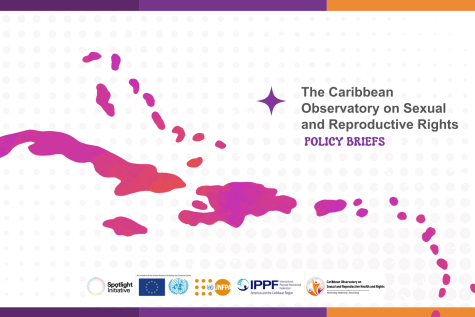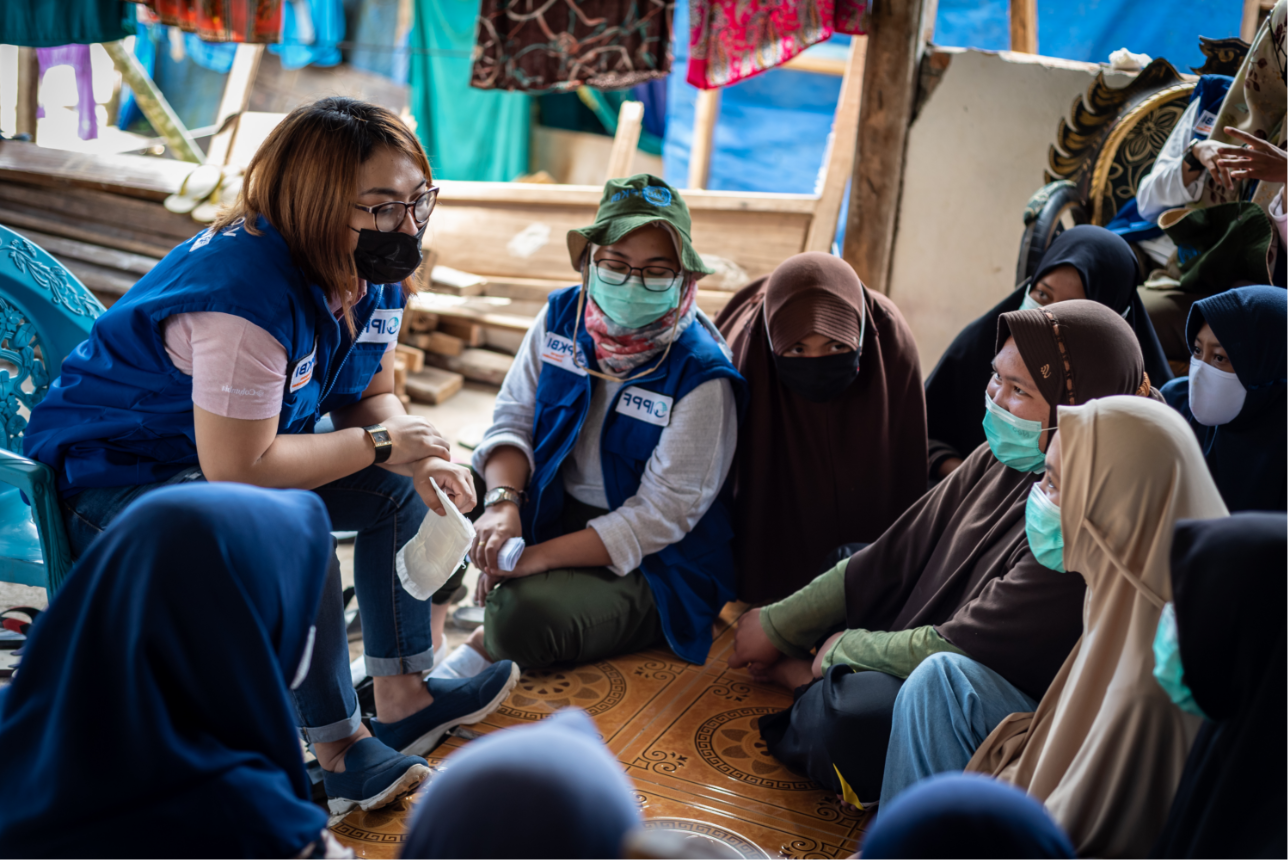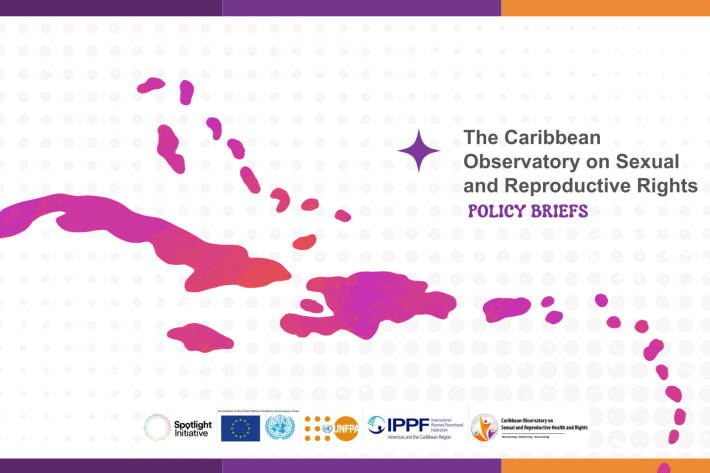Spotlight
A selection of resources from across the Federation

Americas & the Caribbean
Caribbean Observatory on SRHR: Policy Briefs
Data and Advocacy critical to shaping SRHR in the Caribbean
Filter our resources by:


| 30 September 2020
IMAP statement on medical abortion
Lack of access to safe abortion care is further exacerbated in many settings by stigma, a lack of knowledge on sexual and reproductive health and rights (SRHR),3 and what the Guttmacher‑Lancet Commission on Sexual and Reproductive Health and Rights calls “a persistent discrimination against women and girls, and an unwillingness to address issues related to sexuality openly and comprehensively.”4 Particularly vulnerable groups within this context are adolescents; women with disabilities; sex workers; women who are subjected to forced marriage, domestic violence, abuse or rape, or female genital mutilation; and women subjected to human trafficking. Medical abortion has the potential to increase access to safe abortion care and to increase women’s autonomy and decision‑making with regards to their reproductive choices and rights. It is time to implement evidence‑based abortion services that promote, protect and fulfil the sexual and reproductive rights of all individuals everywhere.

| 30 September 2020
Her in charge - Medical abortion and women’s lives - A call for action
Her in Charge report presses governments, health, academic and NGO sectors to take immediate steps to stop women from dying and suffering disabilities due to an unsafe abortion by radically scaling up medical abortion efforts. Nearly one in every two abortions that occur is unsafe – 25 million women each year are forced to find their own, often dangerous, solutions to an unintended pregnancy. The knowledge, the technology, and the experience to make all abortions safe abortions exist. Yet tens of millions of women each year still lack access to completely safe abortions. Medical abortion – the use of the medicines misoprostol alone or in combination with mifepristone to opt out of a pregnancy – is safe, cheap and simple to administer. IPPF’s Her In Charge report demonstrates how medical abortion access can exponentially increase access to safe abortion, enabling women to be in charge about the decisions about their bodies. An essential part of women’s rights. Medical abortion facilitates task-sharing, which is transformational in low-resource settings where primary-care level and lay workers are trained and equipped to administer abortion. Key recommendations: Governments should create a supportive environment to ensure women can access safe and legal abortion, including the political, social, economic, health and legal frameworks. Medical abortion should be embedded in health systems. Governments can ensure the quality, availability and affordability of medical abortion drugs by registering misoprostol and mifepristone in the list of essential medicines of their countries. Women must be supported by health systems in accessing the information they need to have a medical abortion safely and to access post-abortion care. This includes medical abortion without medical supervision. Health systems should include self-administered medical abortion. Women must have full information about medical abortion risks factors, dosage and have access to post-abortion care and contraception. Women must have all options available to them: either medical or surgical abortion, in a health facility or at home – whatever they prefer. It is their right.

| 30 September 2020
From the Field to the World: IPPF's cervical cancer prevention journey
Cervical cancer, a preventable illness, is the fourth most frequent cancer in women, with an estimated 570,000 new cases in 2018 representing 6.6% of all female cancers. An increasing number of SRH organizations are working to introduce and/or strengthen cervical cancer prevention programmes with the aim of increasing their impact on the reduction of mortality and morbidity. IPPF´s work on cervical cancer prevention is guided by our commitment to health equity, gender equality and women’s rights. The purpose of this International Planned Parenthood Federation (IPPF) How-to-Guide to Cervical Cancer Screening and Treatment Programmes is to contribute to the implementation of stronger secondary prevention programmes for cervical cancer and high quality referral services to primary and tertiary care in order to reduce related incidence and mortality in the long term. You can find a digital and mobile friendly version of the How-to-Guide to Cervical Cancer Screening here. The IPPF Cervical Cancer Strategy 2020–2024 has been developed to strengthen and expand IPPF Comprehensive Cervical Cancer Prevention (CCCP) work. This Strategy is aligned with the IPPF Strategic Framework 2016–2022, Gender Equality Strategy and Implementation Plan, Secretariat Business Plan, IPPF Advocacy Common Agenda, and the global trend for cervical cancer prevention (90-70-90 target). This Strategy will lead the IPPF Secretariat and MAs to: Adopt a multi-sectoral approach to integrate CCCP into women’s health programmes, NCD control programmes, and essential health services of UHC. Develop and distribute context-specific and age-appropriate information to achieve long-term social and behavioural change. Introduce and scale up CCCP through identifying missed opportunities, adopting an optimization approach and single-visit approach for cervical cancer screening and treatment, and enabling CCCP via different service delivery channels. Generate additional resources to expand and strengthen MA-led CCCP across the Federation.

| 30 September 2020
Gender assessment toolkit
IPPF is committed to the achievement of gender equality because it is a human right, it advances women’s and girls’ empowerment and it is embedded in sexual and reproductive health and rights (SRHR). As such, we are proud to present a gender equality toolkit for Member Associations – download the PDF file below to find out more.

| 30 September 2020
ICPD+25 Nairobi Summit Commitment Analysis Report: A roadmap for fulfilling the promise
The Nairobi Summit on ICPD+25 – Accelerating the Promise; marked the 25th anniversary of the International Conference on Population and Development (ICPD) held in Cairo in 1994 that recognized sexual and reproductive rights as human rights for the first time. The Summit brought together governments, civil society, academia, the private sector, faith-based organizations, international financial institutions, grassroots organizations and other partners interested in the pursuit of sexual and reproductive health and rights. Participants made commitments as part of an international effort to ensure that the promise of the ICPD Programme of Action (PoA) and the 2030 Agenda are achieved, and women and girls have autonomy over their bodies and their lives. The International Planned Parenthood Federation (IPPF) analysed the commitments made by governments of 137 countries who participated at the Summit to contribute to accountability action at the national level to ensure that those commitments are fulfilled. The report ICPD+25 Nairobi Summit – A roadmap for fulfilling the promise identified thematic patterns, gaps, regional and global trends. The commitments were also analysed against SMART (specific, measurable, attainable, relevant and time-bound) criteria. This report is dedicated to all advocates around the world. The report includes a Government commitments database as well as briefings and regional versions translated into French, Spanish, Russian, Arabic and Portuguese. It identifies many opportunities for civil society and governments to galvanize the political energy of the Nairobi Summit. Now is the time to increase efforts, to hold governments to account and work in partnership to ensure that these political commitments are turned into real national action to improve the lives of women and girls. Watch the Webinar: Act Committed Together (ACT) - A Roadmap to Achieve ICPD

| 30 September 2020
IPPF's Advocacy Common Agenda
The Advocacy Common Agenda will guide our work at all levels of the Federation to achieve Outcome 1 of the IPPF Strategic Framework 2016–2022, namely to ensure that 100 governments respect, protect and fulfil sexual and reproductive rights and gender equality. In doing so, IPPF will contribute to the International Conference on Population and Development Programme of Action, and to the Sustainable Development Goals. The Advocacy Common Agenda is focused on achieving national political change, placing accountability at the centre. IPPF will influence governments to change or uphold laws and policies to ensure that endorsed international agreements are translated into national action to improve the lives of women and girls. We will build on the Federation’s existing skills and experience as a major provider of SRHR to the most vulnerable and underserved populations, and use our Federation presence in 170 countries to work at four interconnected levels of influence: sub-national, national, regional and international.
Pagination
- First page
- Previous page
- …
- 8
- 9
- 10
- …
- Next page
- Last page












